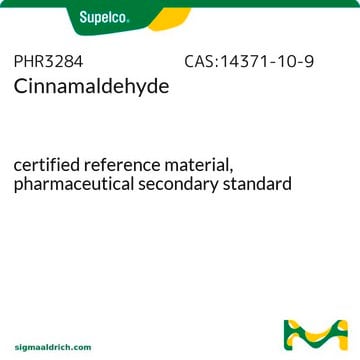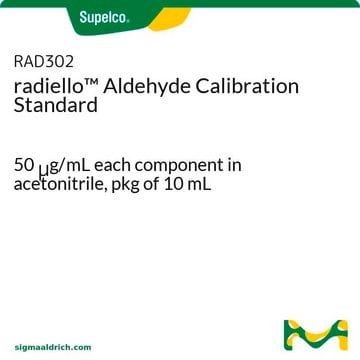CRM40392
Cinnamaldehyde solution
certified reference material, 2000 μg/mL in methanol, ampule of 1 mL
About This Item
Recommended Products
grade
certified reference material
TraceCERT®
product line
TraceCERT®
form
liquid
CofA
current certificate can be downloaded
packaging
ampule of 1 mL
concentration
2000 μg/mL in methanol
technique(s)
gas chromatography (GC): suitable
application(s)
cannabis testing
format
single component solution
storage temp.
-10 to -25°C
InChI
1S/C9H8O/c10-8-4-7-9-5-2-1-3-6-9/h1-8H/b7-4+
InChI key
KJPRLNWUNMBNBZ-QPJJXVBHSA-N
Application
Other Notes
Legal Information
Signal Word
Danger
Hazard Statements
Precautionary Statements
Hazard Classifications
Acute Tox. 3 Dermal - Acute Tox. 3 Inhalation - Acute Tox. 3 Oral - Flam. Liq. 2 - STOT SE 1
Target Organs
Eyes,Central nervous system
Storage Class Code
3 - Flammable liquids
WGK
WGK 2
Flash Point(F)
49.5 °F - closed cup
Flash Point(C)
9.7 °C - closed cup
Choose from one of the most recent versions:
Already Own This Product?
Find documentation for the products that you have recently purchased in the Document Library.
Our team of scientists has experience in all areas of research including Life Science, Material Science, Chemical Synthesis, Chromatography, Analytical and many others.
Contact Technical Service








